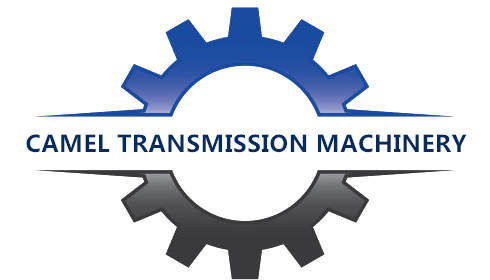Detailed explanation of the parameters of the cycloid reducer
Principle of cycloidal reducer: Cycloid reducer is a novel transmission device that applies the principle of planetary transmission and adopts the meshing of cycloidal needle teeth. The entire transmission device of the cycloid reducer can be divided into three parts: input part, deceleration part, and output part. A double eccentric sleeve with a displacement of 180° is installed on the input shaft, and two roller bearings called swing arms are installed on the eccentric sleeve to form the H mechanism. The center holes of the two cycloids are the upper swing arm bearings of the eccentric sleeve. In order to reduce the friction, in a reducer with a small speed ratio, the cycloidal wheel meshes with a set of circularly arranged needle teeth on the needle gear to form an internal meshing reduction mechanism with a tooth difference of one tooth. , With a needle sleeve on the needle teeth). When the input shaft rotates with the eccentric sleeve, due to the characteristics of the upper tooth profile curve of the cycloidal wheel and the limitation of the needle gear on the needle gear, the motion of the cycloidal wheel becomes a plane motion with both revolution and rotation. When the input shaft rotates positively, the eccentric sleeve also rotates once, and the cycloid rotates one tooth in the opposite direction to obtain deceleration. Then, with the help of the W output mechanism, the low-speed rotation motion of the cycloid is transmitted to the output shaft through the pin. In order to obtain a lower output speed.
Cycloidal pinwheel reducers can be classified according to the number of stages: single-stage, bipolar, and three-stage
According to the installation form can be divided into: horizontal, vertical
According to different standards, it can be divided into: B series, X series, 8000 series, 9000 series, 6000 series
Firstly: Cycloid pinwheel reducer has horizontal and vertical installation forms ,such as
BWD: horizontal foundation plate installation, with motor mounting flange
BWY: horizontal foundation plate installation, motor direct connection type
XWD: horizontal foundation plate Installation, with motor mounting flange
XWY: horizontal foundation plate installation, motor direct connection type
BWED: two-stage reduction horizontal foundation plate installation, with motor mounting flange
BWEY: two-stage reduction horizontal foundation plate installation, motor straight Combined type
XWED: two-stage reduction horizontal foundation plate installation, with motor mounting flange
XWEY: two-stage reduction horizontal foundation plate installation, motor direct connection type
BLD: vertical flange installation, with motor mounting flange
BLY: Vertical flange installation, motor direct connection type
XLD: vertical flange installation, with motor mounting flange
XLY: vertical flange installation, motor direct connection type
BLED: secondary reduction, vertical flange installation, with motor Mounting flange
BLEY: two-stage reduction, vertical flange installation, motor direct-coupled
XLED: two-stage reduction, vertical flange installation, with motor mounting flange
XLEY: two-stage reduction, vertical flange installation, Motor direct connection type
For example:
XWEDB11-8265A-473
X: Represents X series cycloid reducer
W: Represents horizontal foot plate installation
E: Represents two-stage reduction
D: Represents flange connection plate with motor installation
B11: Represents explosion-proof motor 11 kW
8265A represents the base of the reducer.
473 represents the transmission ratio (speed ratio) of the reducer.
BLD1-23-YEJ0.75kw
B: represents the B series cycloid reducer
L: represents the vertical installation
D: represents Mounting flange with motor
1: Represents the base number
23: Represents the transmission ratio (speed ratio) of the reducer
YEJ0.75kw: Represents 0.75KW with brake motor.
Secondly: The speed ratio of the parameters of the cycloid reducer
Single stage: 9,11,17,21,23,25,29,35,43,47,59,71,87
Bipolar: 121 (11*11) , 187 (17*11), 289 (17*17), 493 (29*17), 731, 1003, 1479, 1849, 2537, 3481, 5133, 7569.
The two-stage transmission ratio is the product of two single-stage transmission ratios. The above are commonly used, except for the other 99 (11*9).
Third: The permissible torque of the cycloid pin gear reducer parameters, and the power of the matching motor.
Commonly used supporting power: 0.37kw/0.55kw/0.75kw/1.1kw/1.5kw/2.2kw/3kw/4kw/5.5kw 7.5kw/11kw/17.5kw/22kw/37kw/45kw/55kw/75kw/90kw
Fourth: Types and specifications of matching motors.
Commonly used matching motors are: three-phase asynchronous motor, brake brake motor, frequency conversion motor, roller table motor, frequency conversion brake motor, explosion-proof motor servo motor, pneumatic motor, hydraulic motor, cone brake motor and other power drive sources.
Summary: The parameters of the cycloidal pinwheel reducer mainly include the core parameters of model specifications, operating principles, allowable torque, installation orientation and transmission ratio. Well, the above is the introduction of some knowledge about the parameters of the cycloid reducer.
